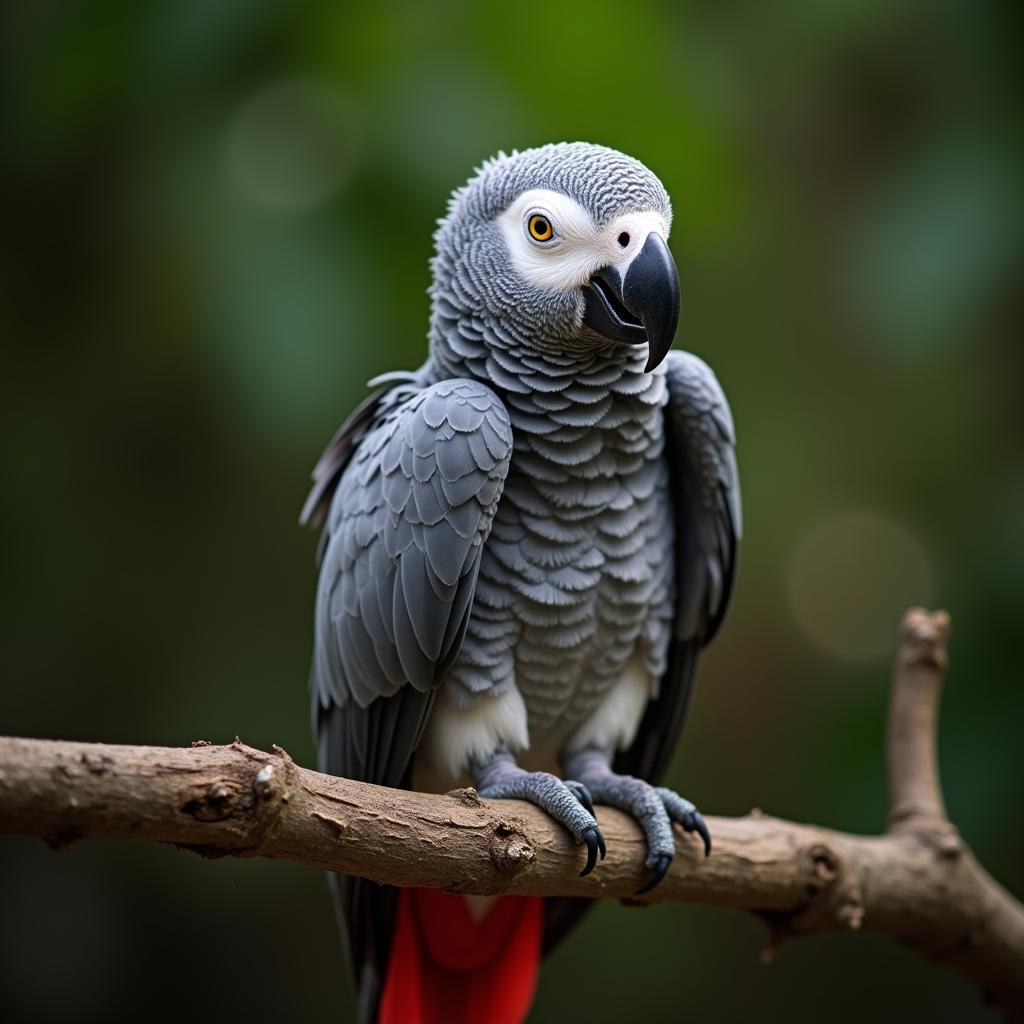African Grey Parrot Eggs and Babys: A Deep Dive into Nesting and Rearing
African Grey parrots are renowned for their intelligence, longevity, and captivating personalities, making them cherished companions for bird enthusiasts worldwide. Understanding the intricacies of their nesting and breeding behaviors, specifically concerning their eggs and chicks, is crucial for anyone considering welcoming these remarkable creatures into their homes or simply seeking to deepen their knowledge of these avian wonders.
Unraveling the Mysteries of African Grey Parrot Eggs
The journey from egg to fledgling is a testament to the wonders of nature. Female African Grey parrots, after successful mating, lay a clutch of 3-5 eggs, each a marvel of avian biology. These eggs, typically laid every other day, are not just vessels of life but also indicators of the parents’ health and the environment they inhabit.
Deciphering the Appearance of African Grey Parrot Eggs
Contrary to the vibrant plumage of their parents, African Grey parrot eggs are surprisingly simple in appearance. Their oval shape and pure white color, while seemingly plain, serve an essential purpose. The white hue provides camouflage within the nesting cavity, protecting them from predators while the parents are away.
Factors Influencing Egg Size and Shape
The size and shape of the eggs can vary slightly depending on the mother’s age, diet, and overall health. For instance, younger females might lay smaller eggs compared to their more mature counterparts. Similarly, a diet rich in calcium and other essential nutrients contributes to stronger, healthier eggshells.
Incubation: The Countdown to Hatching
Incubation, the period during which the parents meticulously regulate the eggs’ temperature and humidity, typically lasts for about 28-30 days. During this time, the female primarily takes on the role of brooding, diligently sitting on the eggs to keep them warm, while the male plays a crucial role in providing food and ensuring her safety.
From Hatchlings to Fledglings: The Joys and Challenges of Rearing
The arrival of hatchlings marks a period of intense parental care and dedication. The chicks, born blind and featherless, are entirely dependent on their parents for survival.
The Crucial First Few Weeks: A Diet for Growth
Feeding plays a critical role in the early development of the chicks. The parents, working in unison, regurgitate a specialized, nutrient-rich substance known as “crop milk” directly into the chicks’ mouths. This “milk,” produced in the crop of the parents, is packed with essential antibodies and nutrients, providing everything the chicks need for healthy growth.
Plumage Development: A Visual Transformation
Over the following weeks, the chicks undergo a dramatic transformation. Their eyes open, their first down feathers emerge, and their signature gray plumage gradually replaces the initial fluff.
Learning to Fly and Thrive: The Fledgling Stage
By around 8-12 weeks of age, the young parrots, now fledglings, begin to test their wings, taking short flights within the confines of their environment. This marks a crucial milestone as they transition from helpless hatchlings to independent individuals, ready to explore the world beyond the nest.
Insights from an Avian Specialist
“Understanding the nuances of African Grey parrot nesting and rearing behaviors is fundamental for their well-being, both in captivity and in the wild,” shares Dr. Amina Kenyatta, a renowned avian veterinarian with over two decades of experience. “Creating a supportive and enriching environment, mimicking their natural habitats, is crucial for successful breeding and the overall health of these magnificent birds.”
 An African Grey parrot fledgling perched on a branch
An African Grey parrot fledgling perched on a branch
Frequently Asked Questions about African Grey Parrot Eggs and Chicks
1. How can I tell if an African Grey parrot egg is fertile?
Candling, a process of shining a bright light through the egg, can help determine fertility. A fertile egg will show signs of veining and a developing embryo.
2. What should I do if I find an abandoned African Grey parrot egg?
Contact a local wildlife rehabilitator or avian veterinarian immediately. They have the expertise and resources to provide the best possible care for the egg.
3. How long does it take for African Grey parrot chicks to wean?
Weaning typically occurs between 10-12 weeks of age, but it can vary. It’s a gradual process, and patience is key.
4. What are the signs of a healthy African Grey parrot chick?
A healthy chick will have bright eyes, a clean vent, and a good appetite. It will also be active and vocal.
5. When can I handle African Grey parrot chicks?
It’s best to minimize handling during the first few weeks of life. Once the chicks are feathered and more independent, you can begin short handling sessions under the guidance of an experienced breeder or avian specialist.
Delve Deeper into the World of African Grey Parrots
For more insights into African Grey parrot care, breeding, and conservation efforts, explore these related articles:
- The Allure of African Grey Parrots: Understanding Their Intelligence and Charm
- Creating the Ideal Habitat for Your African Grey Parrot
- Conservation Challenges and Triumphs: Protecting African Grey Parrots in the Wild
Need help with your African Grey Parrot? Please contact us!
Phone number: +255768904061
Email: [email protected]
Address: Mbarali DC Mawindi, Kangaga, Tanzania.
We are available 24/7 to assist you and your feathered friends.



